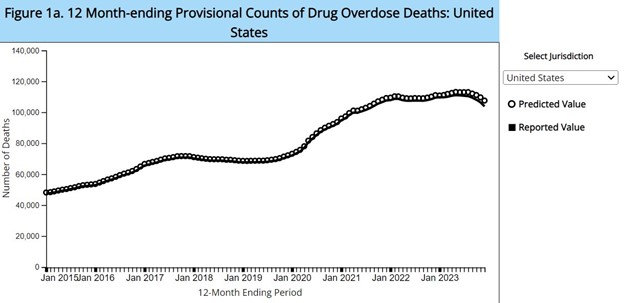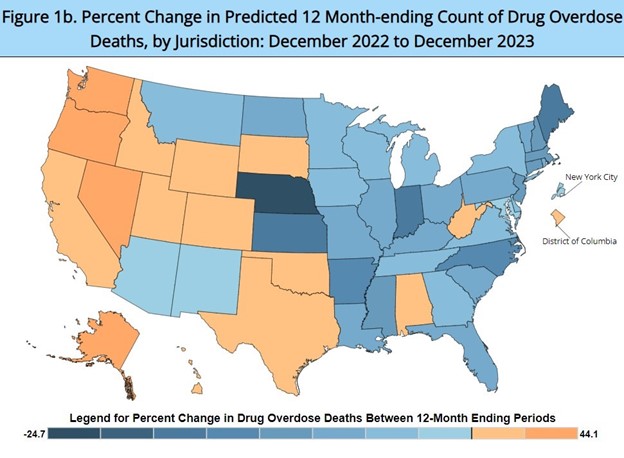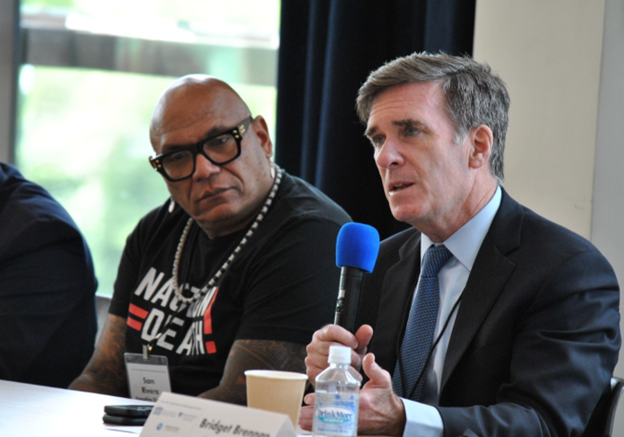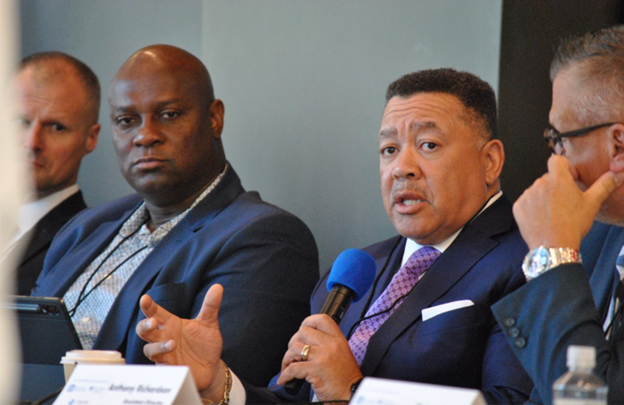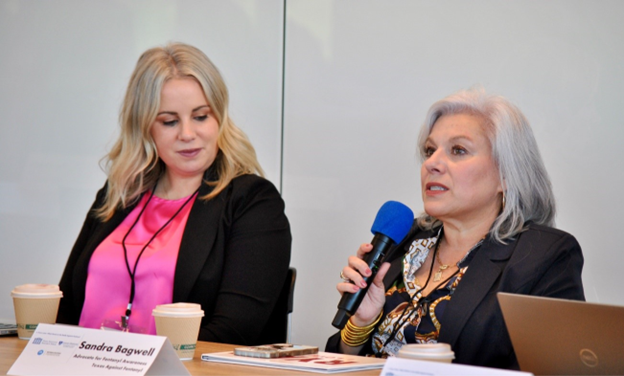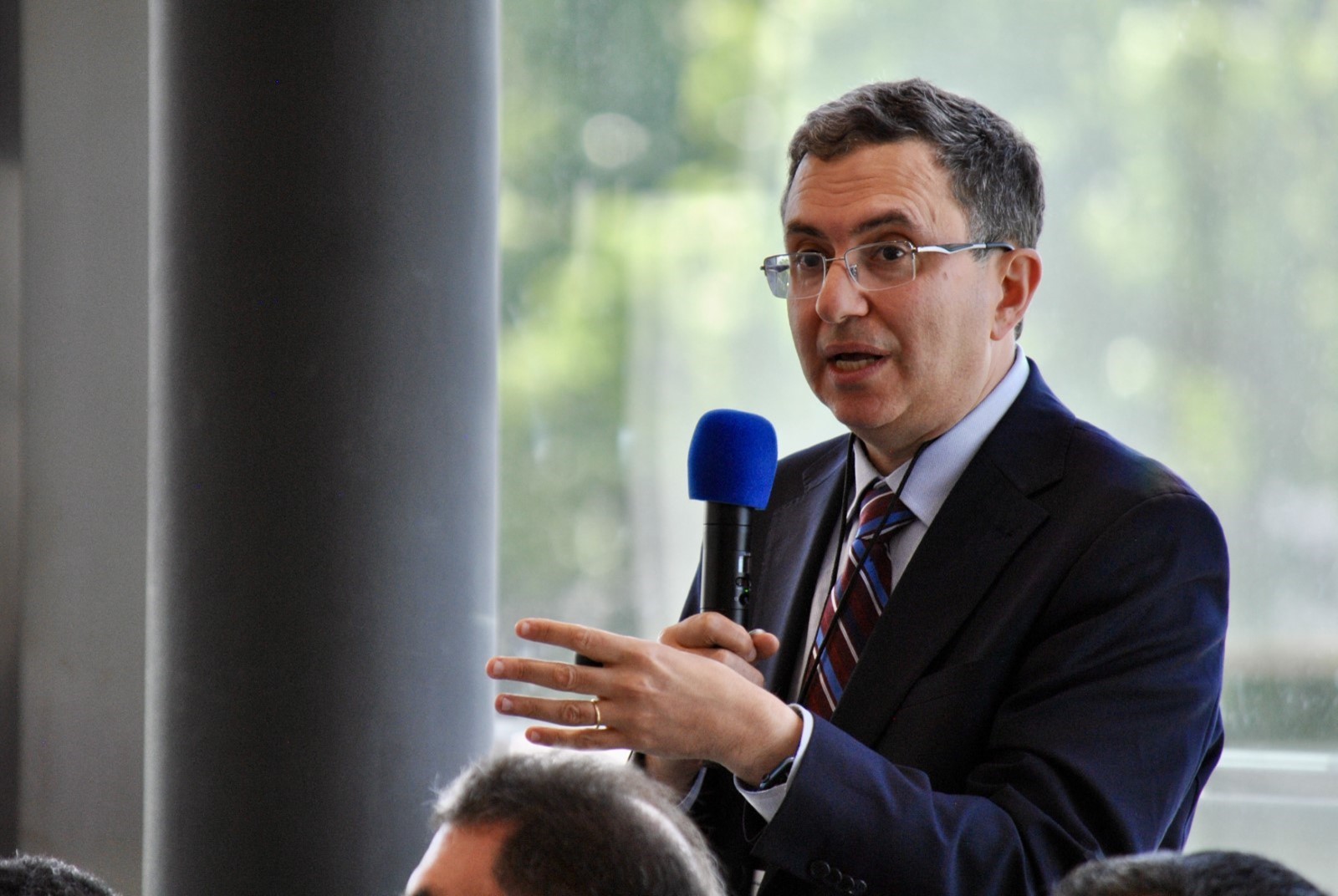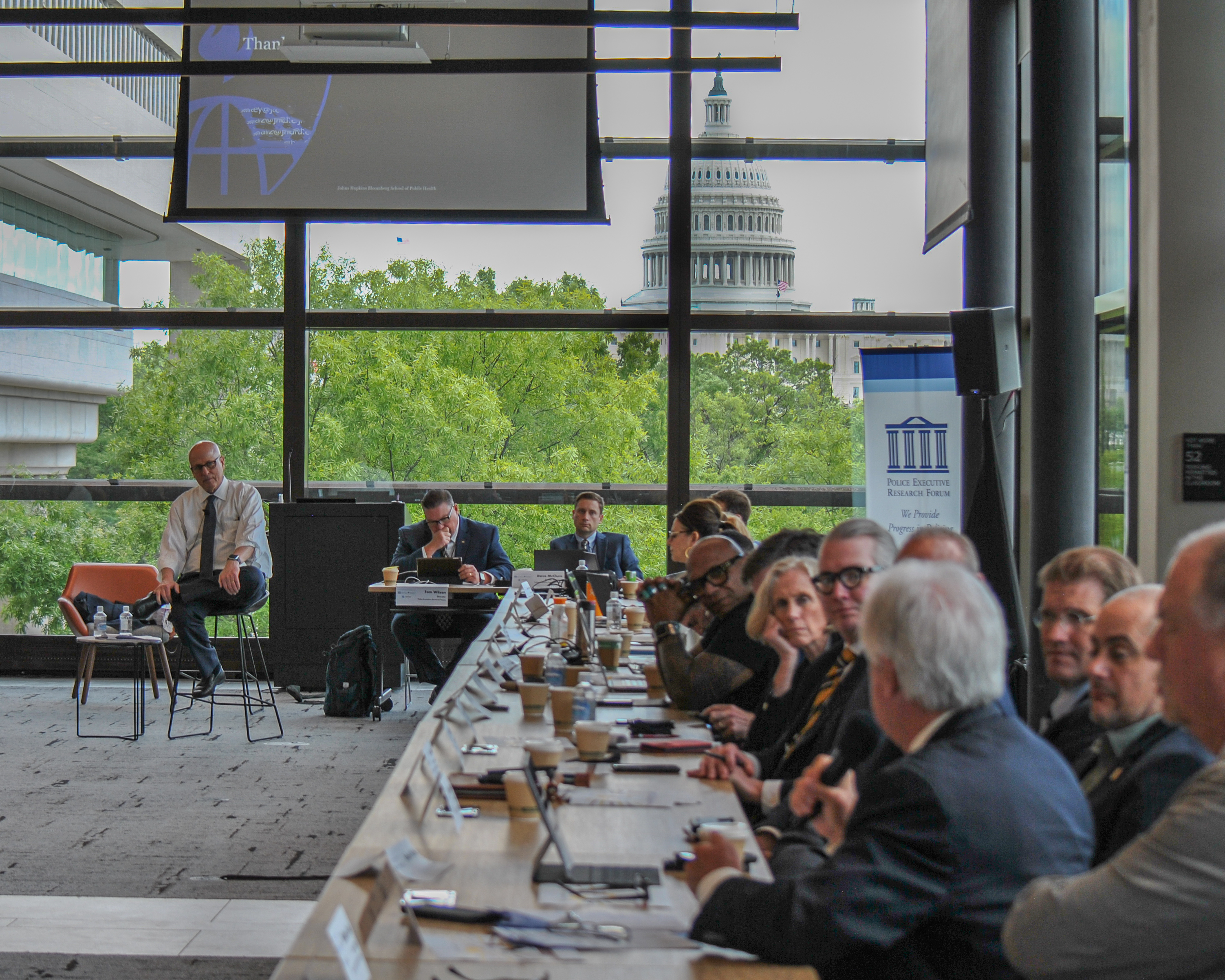|
May 18, 2024 After decades of increases, a glimmer of hope on overdose deaths
PERF members, Over the past ten years, PERF has brought together leaders and published reports on one of the greatest crises facing our country today: opioid overdoses. In 2014, the year of our first report on the topic, more than 48,000 people in the U.S. died from a drug overdose. By the time we published our next report in 2016, that number was up to 64,000 deaths. In 2017 we published a report titled “The Unprecedented Opioid Epidemic,” and there were more than 71,000 drug overdose deaths. That increased to more than 109,000 deaths in 2021, the year of our most recent report. This week there was some rare good news about drug overdose deaths. The CDC reported that they estimate the number of drug overdose deaths fell by about three percent from 2022 to 2023. This good news needs to be kept in context. There were still 50 percent more fatal overdoses in 2023 than in 2017.
Source: CDC And not all parts of the country are seeing improvement. Most of the progress has come from the eastern half of the country, while many states in the west are still seeing increases in overdose deaths. The CDC estimates that drug overdose deaths rose more than 25 percent in Alaska, Oregon, Nevada, and Washington.
Source: CDC So, the news isn’t good everywhere, but 35 states saw a decrease in 2023, and any step in the right direction is a welcome one. With that backdrop, PERF and the Johns Hopkins Bloomberg School of Public Health co-hosted a meeting this week to discuss ways to further reduce opioid overdose deaths. We brought together researchers, police, prosecutors, medical examiners, and service providers to discuss all aspects of this crisis and strategies that could keep decreasing the total number of fatal overdoses. The best approaches blend treatment, outreach, and targeted enforcement, but we know that those working on this problem sometimes do so in silos. As NYPD Deputy Commissioner Chauncey Parker put it, our goal should be to do whatever we can to reduce overdose deaths.
Sam Rivera, executive director of OnPoint NYC, and NYPD Deputy Commissioner Chauncey Parker
Kansas City (KS) Chief Karl Oakman and Philadelphia Police Commissioner Kevin Bethel We were grounded in the reality of those deaths by the participation of two mothers whose 19-year-old sons died after ingesting fentanyl. Stefanie Turner founded the advocacy organization Texas Against Fentanyl after the death of her son Tucker Roe, and Sandra Bagwell began working with the organization after the death of her son Ryan. Both have advocated for use of the term “poisoning” instead of “overdose” for cases in which the individual was not aware they were consuming fentanyl.
Stefanie Turner and Sandra Bagwell
Dr. Joshua Sharfstein, Vice Dean of the Bloomberg School of Public Health, and his colleagues Dr. Susan Sherman, Dr. Javier Cepeda, and Sara Whaley shared some interesting recent research findings concerning the role police can play in addressing this ongoing crisis:
Officers equipped with naloxone often reverse overdoses before EMS arrives. According to a 2022 study on naloxone implementation in New York State, “in 85.9 percent of cases, law enforcement officers arrived at the scene of a suspected overdose prior to emergency medical services personnel,” meaning police often have an opportunity to reverse an overdose before EMS arrives. A 2023 survey of law enforcement agencies found that more than 80 percent are equipping officers with naloxone.
There is no evidence that 8-mg naloxone is more effective than 4-mg naloxone. Three years ago, the FDA approved an 8-mg version of naloxone, which is twice the dosage of the previously approved version. A recent study of naloxone deployments by the New York State Police found no significant differences in either the survival rates of those who received 4-mg or 8-mg naloxone doses or in the number of doses administered by police. 8-mg naloxone is more expensive than the 4-mg version, and this study suggests it is not worth the added cost.
Police outreach and treatment referral programs can reduce overdoses. The New Castle County, Delaware Police Department expanded its HERO HELP program, which connects individuals with treatment, from one full-time staff member to six. A study found that there have been 7.25 fewer nonfatal overdoses and 1.85 fewer fatal overdoses per month since the expansion.
Police departments should train officers on substance use disorders and addiction treatment. A study of officers’ attitudes toward people with opioid use disorder (OUD) found that “most officers in the sample held at least some stigmatizing views toward people with OUD.” The authors suggest “departments should offer officer training and education on substance use disorders, treatment for addiction, and the potential for a person’s recovery,” and that training should include personal testimonies from those who have had substance use disorders.
Drug market disruptions should include outreach to drug users. A study of drug enforcement actions by law enforcement in Marion County, Indiana found that overdoses increased in the nearby area during the following weeks. This suggests that law enforcement should coordinate with public health officials and service providers to connect drug users with treatment resources when taking enforcement actions against their source of drugs.
Dr. Joshua Sharfstein, Vice Dean of the Bloomberg School of Public Health The researchers also stressed the importance and effectiveness of medication-assisted treatment, including in jails and prisons, and meeting attendees from the New Jersey Department of Corrections and the Essex County, Massachusetts Sheriff’s Office said they’re already providing this treatment in their detention facilities.
We’ll be producing a report based on this meeting with more recommendations, and we’ll also discuss this at our annual meeting in Orlando at the end of the month.
I’m grateful to all our meeting participants for sharing their perspectives, and to Dr. Sharfstein and everyone else at the Johns Hopkins Bloomberg School of Public Health for inviting us into their beautiful meeting space with an incredible view of the U.S. Capitol. And finally, this meeting was part of the Critical Issues series made possible through the generosity of the Motorola Solutions Foundation.
Have a fantastic weekend! Best, Chuck |

